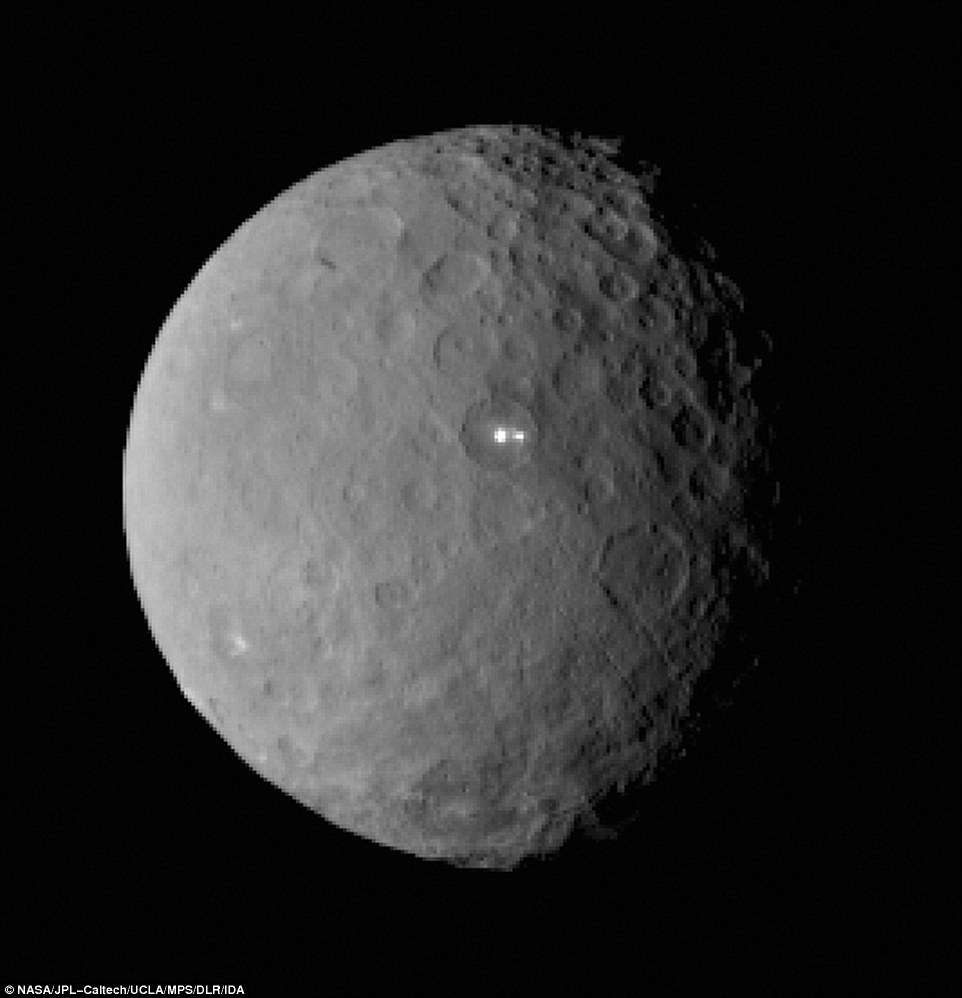
After a white blotch immortalized by NASA’s Dawn probe in January, Ceres holds more surprises. Sharper images beamed by the spacecraft show that the mysterious spot consists in two separate but dim lights.
Yet, our most capable astrophysicists have no clue what Ceres’ mysterious white lights may be, but they have a bunch of theories.
Ceres, which is the largest space object in the asteroid belt and was recently classified as a dwarf planet while Pluto was being downgraded to the same category, is currently expecting a historical rendezvous with Dawn space craft on March 6.
While getting closer to Ceres, NASA’s probe beamed back to Earth some of the most accurate photos of the dwarf planet, but the recent imagery is revelatory. On Jan. 13, a series of low-res photos taken by the Dawn craft revealed a flickering white blotch on the planet’s surface.
Back then, scientists had no idea what it might be, but they did describe it as both “intriguing” and “mysterious.”
On Feb. 19, as Dawn was closer to the planet, it managed to take another set of photos this time from a closer range (close to 29,000 miles). The higher quality photos revealed that the previously spotted white blotch on Ceres surface consisted in two separate light sources.
Ceres’ bright spot can now be seen to have a companion of lesser brightness, but apparently in the same basin,”
Chris Russell, researcher involved in the Dawn mission, reported in a press release from NASA’s Jet Propulsion Laboratory (JPL).
Mr. Russel also said that his team currently speculates that the probable sources of such light emissions may be volcanic activity on Ceres. However, he added that it was too soon to launch such a hypothesis since everyone was waiting for better resolution imagery before making “such geologic interpretations.”
Yet, other scientists claim that the two lights may be the result of light reflection onto an icy surface. Still, if that it the case, UCLA scientists claim that the material reflects only 40 percent of the light falling on it. To see whether their hypothesis is correct, UCLA astronomers are also waiting for better images of the planet.










No comments:
Post a Comment
Note: Only a member of this blog may post a comment.